Hanon finger exercises
Hanon finger exercises, page 2 - Nos. 6 to 10
The Hanon finger exercises have been a staple of piano teaching for more than a century - and with good reason. They are easy to understand and therefore to play and they train the fingers to obey mental commands as well as warming the hands up nicely for repertoire practice and performance.
Anybody hoping to become or remain a keyboard player or performer needs technical practice to maintain any level of skill. Supplemented with more advanced technical exercises as necessary, the Hanon finger exercises offer a simple first-choice solution to doing just that.
Download the hard copies (Nos. 1 to 10) here.
Why another source of Hanon exercises?
There is no shortage of free Hanon downloads - the wonderful www.free-scores.com has a Hanon Nos. 1-20 facsimile set and a shorthand version of the same.
The problem with these versions is two-fold. Firstly, they span two octaves, more than is needed to practice, in the author's opinion (on the grounds that you would gain more from practicing one octave each of two patterns than two octaves of the same pattern).
Secondly, and partly as a result, they present a dense, blank, ink-filled and frankly doom-laden appearance, and, in actual practice, stifle critical practice and self-reliance.
The Musicarta versions of Nos. 1 to 10 are presented over one octave only, and only one exercise/pattern per page - for ease of printing off for weekly distribution and to maintain a light look on the page. Download the hard copies (Nos. 1 to 10) here.
This music is placed in the public domain by the setter and may be freely reproduced and distributed. Please do not remove the www.musicarta.com branding when reproducing for pupils.
The online pages also have reference audio-visual performances which demonstrate the pattern rehearsed. Listening before playing helps model the performance in advance and pulls the attention away from the written music and towards the performance.
The first ten exercises are split up over two pages with page anchors so that pupils can be directed straight to their exercise-of-the-week. The links, which can easily by shared, are at the foot of the page.
A line diagram of the shape of the exercise is given, with an exaggerated thumbnail sketch of the profile to guide you. The more quickly you can see and play 'the pattern', the more quickly you can concentrate on letting the exercises truly improve your technique.
Once pupils understand how the exercises creep up and down the keyboard and can 'spot the pattern' reliably, a Hanon shorthand (Nos. 1-30) version should be all that is needed. (Note that this is for an optional two-octave run-through, so starts an octave lower.)
And yes, these are exercises! Try to build up speed, accuracy and volume. Piano playing is a lot more physical than most people at first think, and practicing can usefully approached as if you were training for a sport!
Hanon Nos. 6 to 10

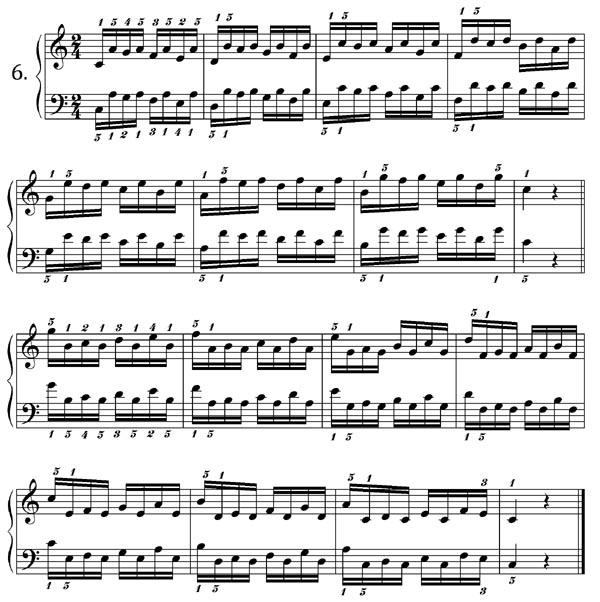

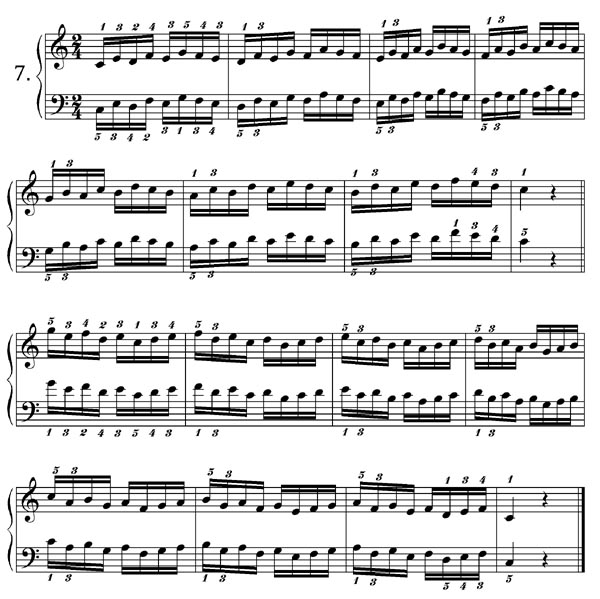

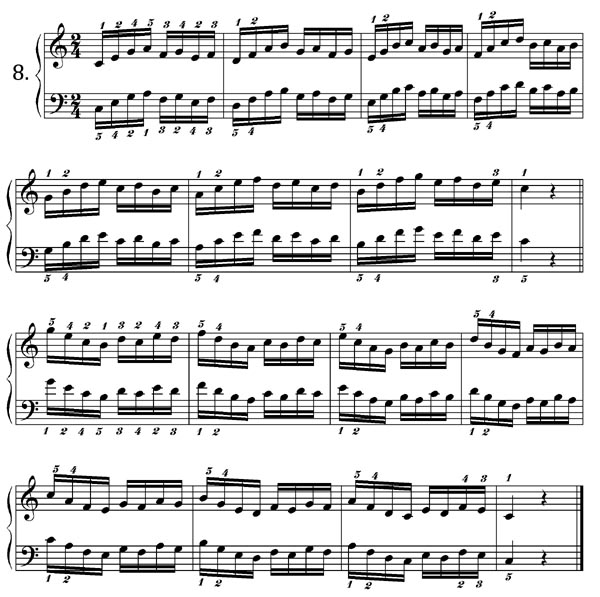

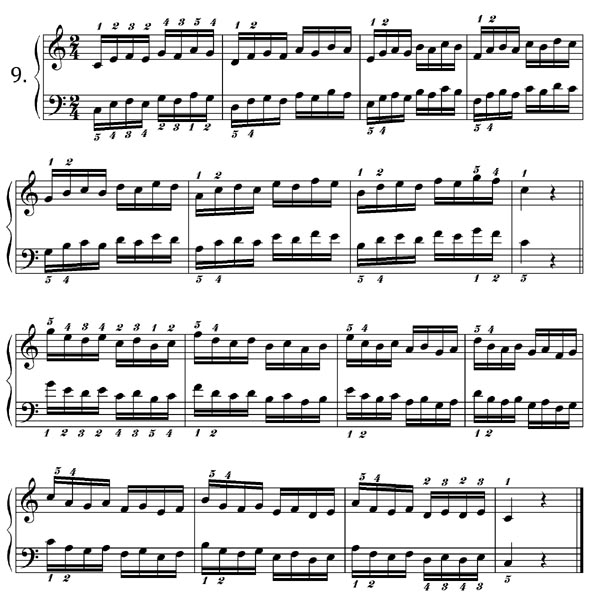

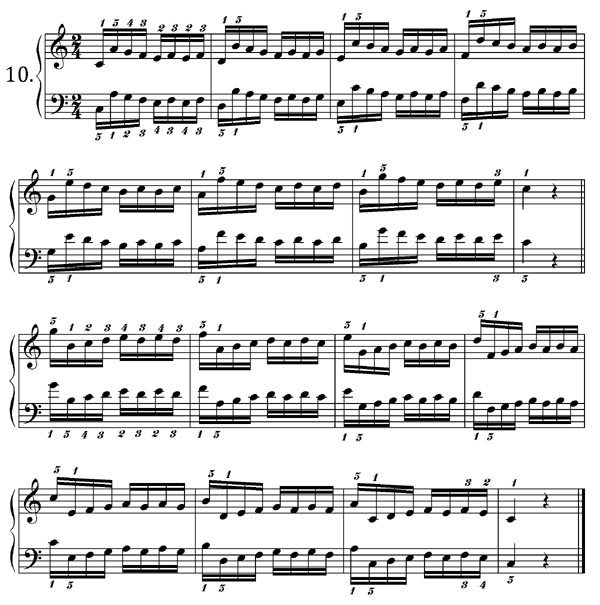
Now go on to Exercises 11 to 15.
|
|
Sign up for the Musicarta News! Get an overview of Musicarta in manageable monthly slices, keep up to date with new postings and get the latest discount codes. The Musicarta News - regular encouragement to learn and progress! |
|
OUT NOW! |
THE MUSICARTA BEAT & RHYTHM WORKBOOK At last! An effective approach to keyboard rhythm & syncopation skills. Learn more! |
ONLY $24.95! |
The MusicartaA methodical approach to keyboard syncopation for
|
PUBLICATIONS
exciting keyboard
creativity courses
CHORDS 101
WORKBOOK

~HANON~
video course

Musicarta
Patreon
PENTATONICS
WORKBOOK
video course

Creative Keyboard
video course

BEAT AND RHYTHM
WORKBOOK

- Volume 1 -

12-BAR PIANO
STYLES WORKBOOK

MUSICARTA MODES
WORKBOOK

PIANO STYLE

CANON PROJECT
video course

VARIATIONS
video course


- Piano Solo -
video course

- Piano Solo -


YouTube playlists





 THE LOGO
THE LOGO
